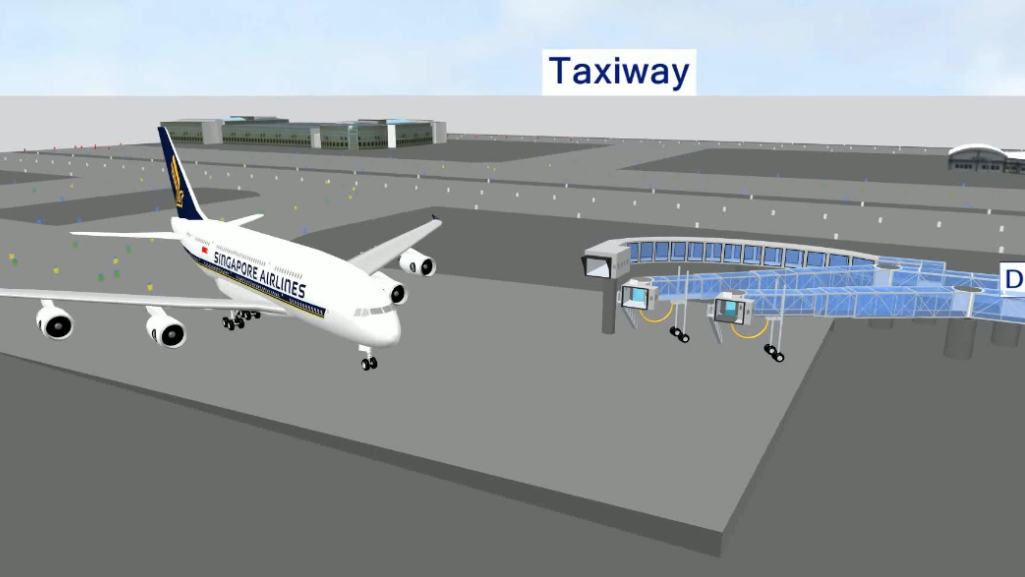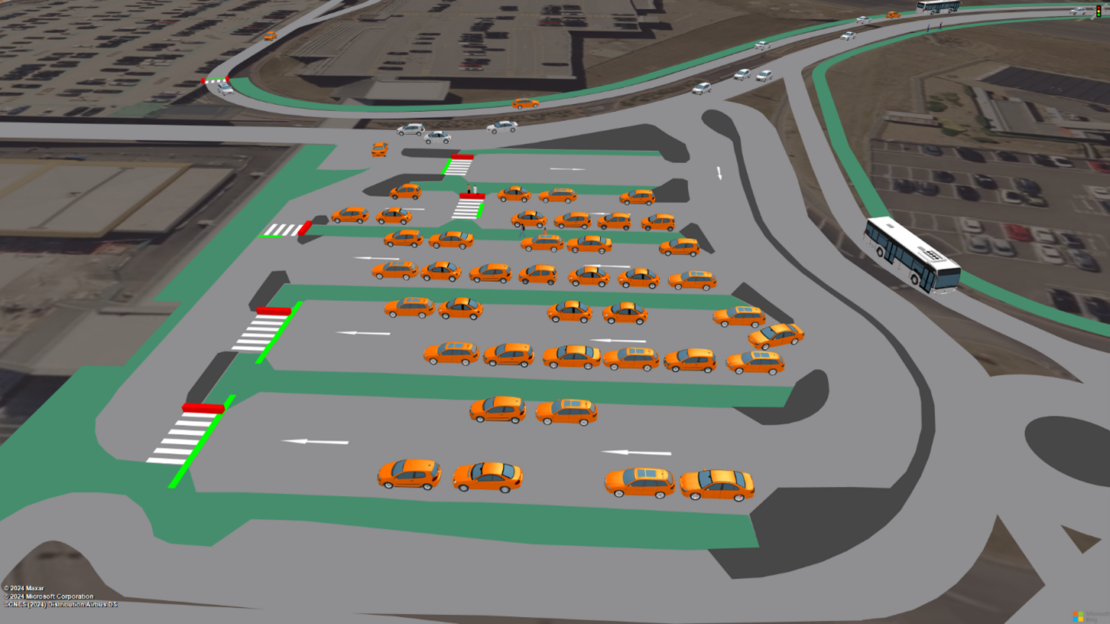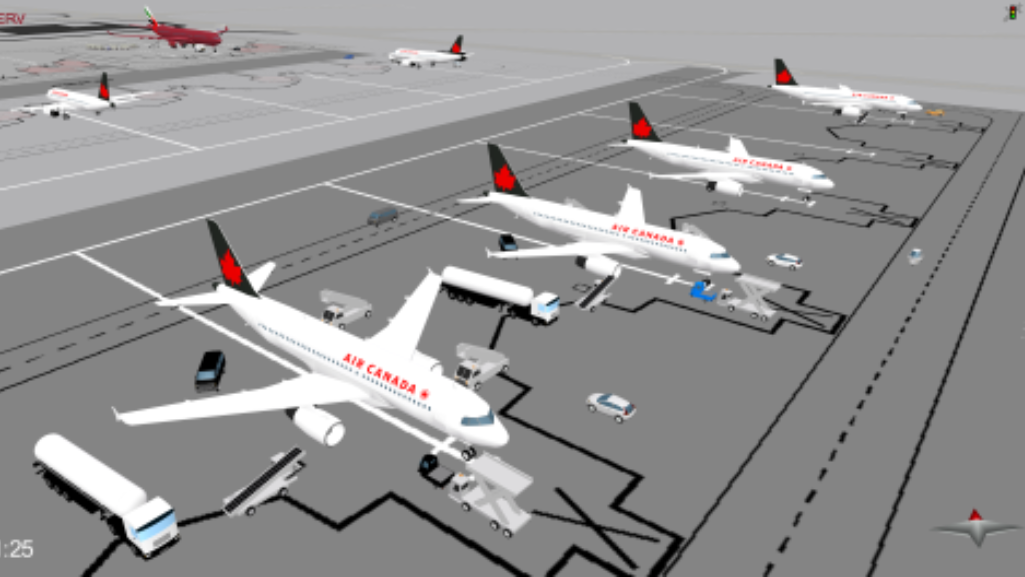Table of contents
Airports are among the most complex logistical ecosystems in the world. From the moment passengers arrive—by car, train, bus, or foot—through their journey in the terminal, to the instant an aircraft lifts off the runway, an intricate choreography unfolds. Every step is dependent on precise timing, adequate capacity, and operational efficiency.
To coordinate these moving parts, airports increasingly rely on advanced tools such as microsimulation. By enabling data-driven decision-making, forecasting demand, and preparing for a wide range of scenarios, simulation technology helps airports remain efficient, resilient, and passenger-friendly.
Microsimulation modeling of land and airside
Tools like PTV Vissim and PTV Viswalk allow planners to create realistic models of both current and future operations. These simulations span the entire airport environment—from passenger flows inside terminals to traffic movements on access roads and airside aprons.
Terminal Processes
Every day, thousands of passengers navigate airport terminals. Consider Hartsfield–Jackson Atlanta International Airport, the busiest in the world, handling an average of 275,000 passengers daily.
Pedestrian simulations play a critical role in ensuring smooth, safe, and efficient passenger circulation at this scale. They allow planners to evaluate and improve everything from gate layouts and walking distances to security screening, baggage handling, and lounge operations. They can anticipate bottlenecks before they occur, match staffing levels to peaks and troughs in passenger demand, and even test emergency evacuation procedures or crowd dispersal strategies to strengthen safety and resilience.
Landside Operations
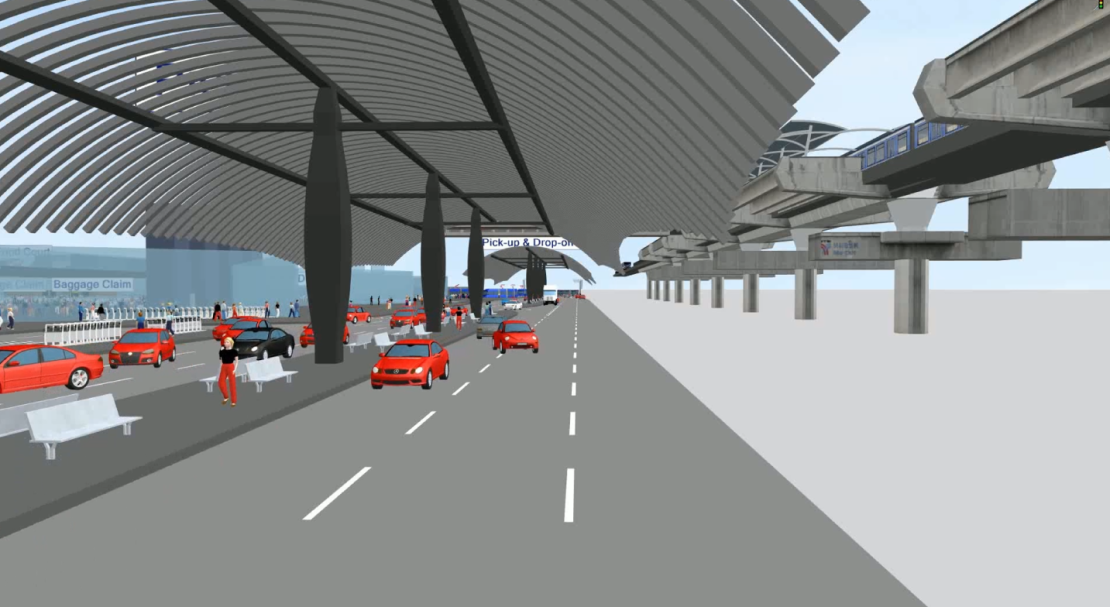
Microsimulation also plays a critical role in planning how passengers arrive at the airport and move around landside facilities. This includes road networks, parking, pick-up and drop-off zones, public transport connections, and pedestrian access to terminals. Planners can assess whether arrivals align with processing capacity inside, identify potential conflicts in traffic flows, and determine if vertical transportation such as elevators and escalators is sufficient for pedestrian demand.
At London Luton Airport, for example, simulations were used to develop temporary drop-off arrangements after a fire closed one of the terminal car parks. At Dubai Airport, planners used PTV software to create a landside demand generator that linked vehicle and pedestrian arrivals directly to the live flight schedule, producing more accurate forecasts of passenger flows and improving coordination between ground transport and terminal operations.
In China, the Civil Aviation Administration (CAAC) has selected PTV Vissim as the recommended simulation software for both landside and airside airport operations. One prominent example of a major airport project that applied microsimulation during its planning phase is Beijing Daxing International Airport, which opened in 2019. Designed for an initial capacity of 45 million passengers annually—with the potential to exceed 100 million—it stands as a “Mega International Airline Hub” with complex systems and multiple layers PTV Vissim played a pivotal role in shaping the airport’s landside traffic systems. Planners used the software to analyze traffic patterns, test various approach road designs, evaluate parking capacities, and predict how fluctuations in demand would impact service levels. By integrating real-time arrival and departure data, they were able to allocate passenger flows efficiently to boarding gates and transport modes. The simulation model incorporated five major transport modes, including pedestrian movement, and enabled comparisons of multiple terminal layouts to ensure long-term efficiency, safety, and passenger comfort.
Airside operations
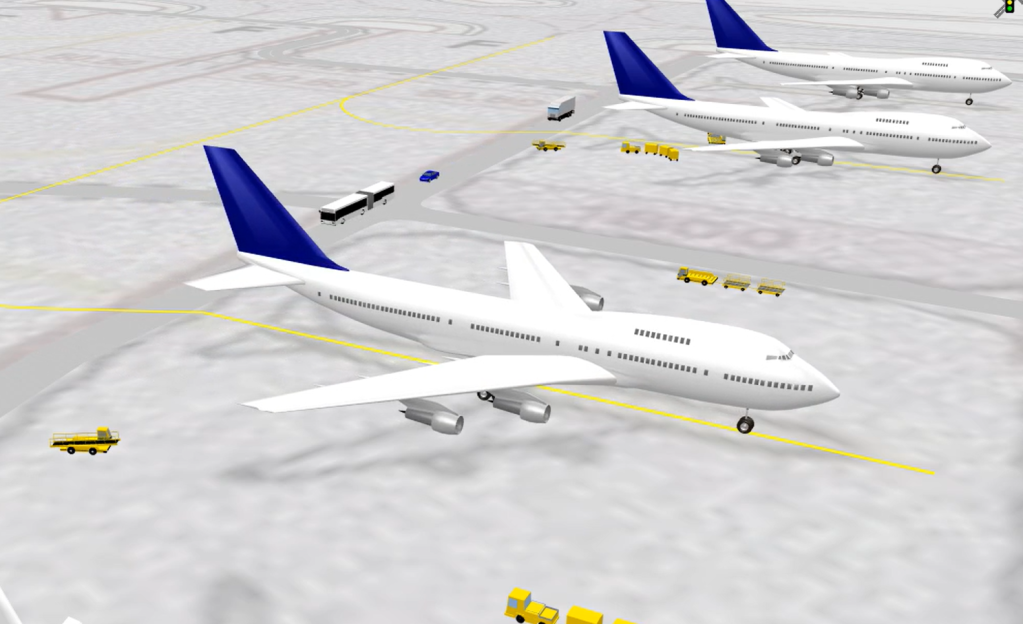
On the airside, microsimulation models everything from aircraft routing, taxiway layouts, and stand allocation to the movements of ground support equipment (GSE) such as baggage carts, catering trucks, and fuel tankers. Planners can determine the exact number of vehicles needed to meet a flight schedule, identify the most efficient storage locations, and spot bottlenecks before they disrupt operations.
During a major expansion, Oman Airports Management Company used PTV Vissim to assess new apron, taxiway, and runway configurations alongside service vehicle routing. The work included integrating aircraft and GSE movements into a single model, evaluating multiple design scenarios, and optimizing stand usage at peak times. Gatwick Airport in London used PTV’s tools to support the extension of aircraft stands, forecasting the performance of airside road networks, assessing the impact of vehicle delays on aircraft operations, and dynamically routing traffic to avoid congestion.
Airports operate in a delicate balance between efficiency, safety, and passenger experience, all within an environment that changes by the minute. Microsimulation provides a way to model this complexity, test ideas before they are implemented, and adapt with confidence to future challenges.

PTV Viswalk for smooth, safe, and efficient passenger circulation
The microscopic, individuals-based simulation with PTV Viswalk gives you a comprehensive overview of the dynamics and paths of pedestrians in intersections.

Get your free Trial of PTV Vissim and start right away
PTV Vissim simulates driving and pedestrian behaviour more realistically than any other software with its thorough and dedicated motion models.
